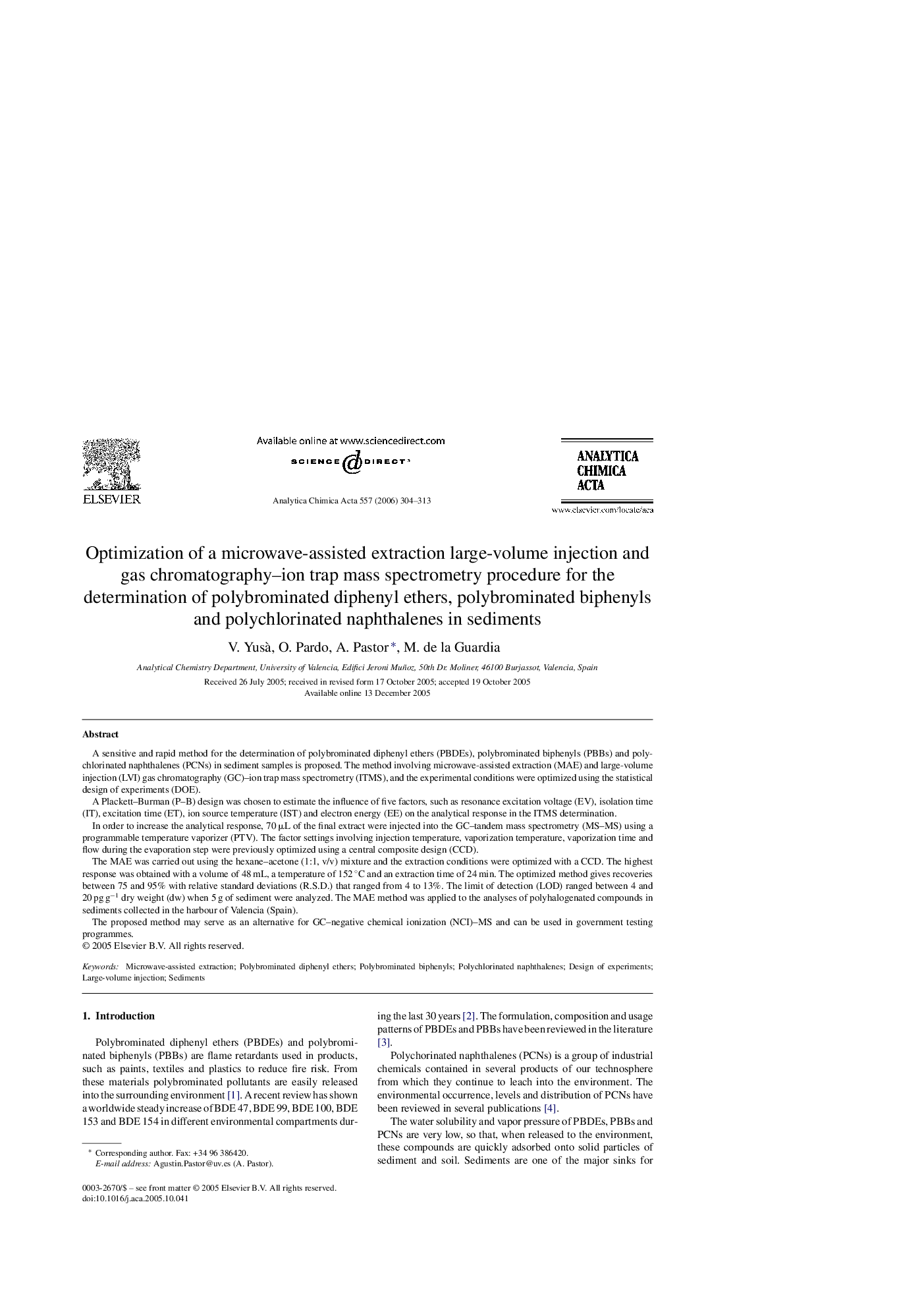| کد مقاله | کد نشریه | سال انتشار | مقاله انگلیسی | نسخه تمام متن |
|---|---|---|---|---|
| 1172351 | 1491185 | 2006 | 10 صفحه PDF | دانلود رایگان |

A sensitive and rapid method for the determination of polybrominated diphenyl ethers (PBDEs), polybrominated biphenyls (PBBs) and polychlorinated naphthalenes (PCNs) in sediment samples is proposed. The method involving microwave-assisted extraction (MAE) and large-volume injection (LVI) gas chromatography (GC)–ion trap mass spectrometry (ITMS), and the experimental conditions were optimized using the statistical design of experiments (DOE).A Plackett–Burman (P–B) design was chosen to estimate the influence of five factors, such as resonance excitation voltage (EV), isolation time (IT), excitation time (ET), ion source temperature (IST) and electron energy (EE) on the analytical response in the ITMS determination.In order to increase the analytical response, 70 μL of the final extract were injected into the GC–tandem mass spectrometry (MS–MS) using a programmable temperature vaporizer (PTV). The factor settings involving injection temperature, vaporization temperature, vaporization time and flow during the evaporation step were previously optimized using a central composite design (CCD).The MAE was carried out using the hexane–acetone (1:1, v/v) mixture and the extraction conditions were optimized with a CCD. The highest response was obtained with a volume of 48 mL, a temperature of 152 °C and an extraction time of 24 min. The optimized method gives recoveries between 75 and 95% with relative standard deviations (R.S.D.) that ranged from 4 to 13%. The limit of detection (LOD) ranged between 4 and 20 pg g−1 dry weight (dw) when 5 g of sediment were analyzed. The MAE method was applied to the analyses of polyhalogenated compounds in sediments collected in the harbour of Valencia (Spain).The proposed method may serve as an alternative for GC–negative chemical ionization (NCI)–MS and can be used in government testing programmes.
Journal: Analytica Chimica Acta - Volume 557, Issues 1–2, 31 January 2006, Pages 304–313